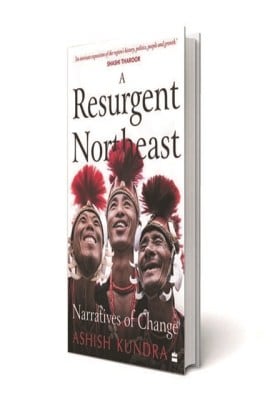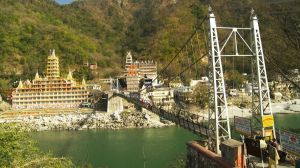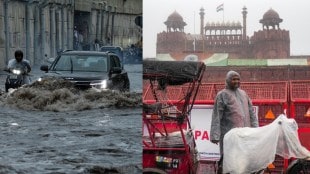Barely a few weeks before Mizoram went to polls at the onset of winter in 2018, the picturesque hill state in the remotest corner of Northeast India went into a crisis of sorts. The bone of contention was SB Shashank, the chief electoral officer (CEO) of the poll-bound state. Some civil society groups in Mizoram were demanding Shashank’s ouster over a row on allowing Bru (a community indigenous to the region, living mostly in Tripura, Mizoram, and Assam) voters lodged in relief camps in nearby Tripura to exercise their franchise from there.
A week earlier, people had gathered in large numbers in front of Shashank’s office, following a call by the NGO Coordination Committee, an umbrella organisation of major civil societies and student associations, to picket his office and demanding his removal.
Also read: Book review: Nation vs religion
The committee had sought Shashank’s exit from the state after the Election Commission removed Lalnunmawia Chuaungo, the principal secretary (home) of Mizoram. The protesters were demanding the ouster of Shashank, who they alleged had hurt the sentiments of the people of the state by his ‘pro-Bru’ stance for conducting the elections.
Enter Ashish Kundra, a 1996-batch IAS officer of the Arunachal Pradesh-Goa-Mizoram and Union Territory (AGMUT) cadre, who was appointed as Shashank’s replacement. Kundra not only ensured peaceful conduct of the assembly elections on November 28, 2018, but also the ensuing general election to the lone Lok Sabha seat in Mizoram on April 11 the following year.

He also earned kudos for his innovative methods of encouraging voters to turn up in large numbers such as the ‘selfie contest’, through which voters, especially the first timers, could post ‘selfies’ after votes were cast with voters showing their finger marked with indelible ink or voters’ ID on Instagram with the hashtag #MizoramVotes.
Kundra’s love for the region is well known. Having served in northeast India for eight years—through three stints as a civil servant in the region, which is also the source of inspiration for his latest book, A Resurgent India: Narratives of Change—his wealth of knowledge and experience is unparalleled. He brings forward a unique perspective of the region through the eyes and ears of an ‘outsider’.
Incidentally, the idea of writing the book came to his mind when Kundra was posted as a young civil servant in Mizoram about 20 years ago. Far less travelled and younger then, he was in a kind of ‘culture shock’ when he discovered things he had never witnessed before. Apart from the apparent dissimilarities in physical appearances, he noticed that women were a dominant
demographic in the marketplace. He also experienced a sense of community under a binding force—the all-powerful Young Mizo Association (YMA)— and the value of politeness and ‘trust’ (for instance, discovering shops without shopkeepers).
However, this sense of disbelief soon turned into a new vibe when he got posted to Mizoram again in 2018, after a gap of nearly two decades, just after an enlightening tenure of two years in nearby Arunachal Pradesh where he served as the commissioner of finance planning and investment. “There is a buzz in the region. An inspirational new generation riding on the power of social media is scripting change. Better air connectivity and improved roads have transformed the landscape of opportunity. Aizawl wears a brand-new look. People are warm and friendly. The undercurrent of hostility is a thing of the past,” he writes.
That’s where the book scores over others. We have read quite a few tomes on the northeast—albeit not too many—where the narrative has often revolved around conflict and ethnic violence spanning over decades. But Kundra’s book talks about the ‘new drama’ that’s unfolding in the hills and valleys of the east, but, of course, with a bit of history and context sprinkled in around every anecdote that he recounts. “The new kids on the block are inheritors of a painful past. They are hungry for development and are in a hurry to make up for lost time. An air of restlessness hangs heavy over the blue mountains,” he writes.
This ‘hunger’ and ‘restlessness’ form the basis of Kundra’s book on the ‘transformational change sweeping across the remotest and least known corner of India’. He gives the example of Sikkim’s 13-year-long epic journey of persistence, persuasion and perseverance to become India’s first fully organic state on December 31, 2015. Similarly, he writes about young changemakers like Nagaland’s Dolly Kikon and Hekani Jakhalu (along with Salhoutuonuo Kruse, she became the first women from Nagaland to be elected to the state legislative assembly recently) and Manipur’s Niranjan Singh, who left their flourishing careers abroad to help and train the youths of the region for local jobs or business opportunities.
Kundra also talks about the sporting prowess of the people of northeast and their spectacular rise in several sporting arenas over the years. Despite the dearth of quality coaches and infrastructure, which the author feels has changed in the last decade, the region has produced some of the best sportspersons in the country, including boxers Mary Kom and Lovlina Borgohain, footballers Bhaichung Bhutia, Sunil Chettri, Renedy Singh and countless others (no surprise that nearly half of the 21-member Indian squad for FIFA under-17 come from the northeast), hockey player Lalremsiami Hmarzote (she became the first woman sportsperson from Mizoram to be part of the Olympic squad in the Tokyo Games of 2021, where India finished fourth), weightlifters Jeremy Lalrinnunga and Mirabai Chanu, sprinter Hima Das, gymnast Dipa Karmakar and mountaineer Anshu Jamsenpa, among many others.
“The hunger to excel coupled with an innate athletic prowess is a great recipe for success,” writes Kundra.
The author attributes the ‘winds of change’ sweeping the entire landscape of northeast India to factors such as improved connectivity and technology and a generational shift that will “give shape to a fresh dialogue with a ‘new India’. “… People of the Northeast will hopefully make wise choices, and not tread on an unsustainable path of development like the rest of us. For then they run the risk of losing everything that makes them so special,” he writes.
Meanwhile, as the principal secretary-cum-commissioner (transport) in the government of the National Capital Territory (NCT) of Delhi, Kundra is currently leading the charge to electrify the region’s mobility, curbing tailpipe emissions, getting RTO services to citizens’ doorsteps by way of faceless services, implementing road safety measures to make the streets of Delhi safe and secure, as well as ensuring women safety in public transport by implementing projects like installing CCTV cameras and panic buttons in every bus. Will a book on the national capital be as optimistic as this one?
A Resurgent Northeast: Narratives of Change
Ashish Kundra
HarperCollins
Pp 236, Rs 399









